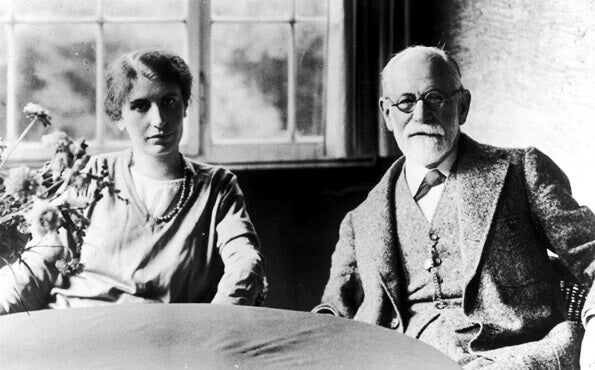Anna Freud was an unwanted girl. She was the youngest of six siblings and the only one to become, in her teens, the devoted and almost selfless disciple of her father, Sigmund Freud, guinea pig of psychoanalysis and heir to her heritage. in the field of child psychology she was pioneering and truly valuable.
The name of this interesting woman fortunately does not sail in the fog of oblivion, her name did not fall into that diffuse echo where other female figures were almost diluted by the closeness of great men with those who shared the lineage. , the figure of Ada Lovelace, outstanding mathematician and forerunner of programming language; a woman who, for many, was but Lord Byron’s daughter.
- “I always sought strength and confidence on the outside.
- But then I discovered that they are inside.
- Where they have lived all this time.
- ” – Anna Freud-.
Anna Freud was also the most eminent daughter of the father of psychoanalysis, a girl who came into the world without anyone waiting for her, but who gradually managed to differentiate herself from her brothers and all the relatives who blindly idolized the Austrian doctor and neurologist. Anna was rebellious, worried and sought above all to gain the strength and admiration of her father, a man who always treated her more like a patient than a child.
It was during the 1920s that, as a member of the Vienna Psychoanalytic Association, her life began to take new directions, Freud had already been diagnosed with cancer and Anna, determined not to leave her father at any time, thought she would not. would abandon. her and would not guide her career in other fields. Instead of practicing as a therapist, she decided to treat young children pedagogically according to psychoanalytic guidelines.
She began doing this in 1925 in Vienna and continued to England in the context of World War II, a fundamental step in which she will begin her authentic work, which will somehow continue that of the late Sigmund Freud, but bring new approaches.
Anna Freud has always been a practical woman. He didn’t like theorizing much: that’s why his books are full of interesting case studies as a basis for justifying and developing his ideas. What she wanted most was for psychoanalysis to have therapeutic use in people’s lives, especially childhood.
Among the various defense mechanisms listed by Anna Freud, these are the best known:
In 1941, Anna Freud opened a nursery and several children’s houses on Wedderburn Street in London, at the time she had read Maria Montessori and, moved by all those little ones traumatized by the war, decided it was time to move on and accomplishments in this area that interested her so much.
Therefore, the sofa has been set aside to create real games rooms: a context much more appropriate for spontaneous expression of the little ones.
Anna Freud has advocated throughout her life the need to care for a child’s childhood relationships as a fundamental mechanism for their good development, their work on children who had suffered neglect or extreme helplessness, for example, served as the basis for many subsequent analyses. .
“What I’ve always wanted for me is much more primitive. It’s probably just the affection of the people I’m in touch with and your good opinion of me. -Anna Freud-
Another pioneering initiative was the recommendation that children should not be hospitalized longer than necessary, nor should they remain in orphanages for extended periods if orphaned or abandoned Children need family outreach and a maternal figure Every distance within the family (reference figures) causes stress, fear and has an impact on the child’s mental mind and development.
Anna Freud wanted her reception centres to work on the structure of her reception centres, in this way every child abandoned or traumatized by the effects of war finds in these institutions other companions (brothers) and an alternative mother or psychotherapist who dealt with trauma. and recurring nightmares of the little ones.
The “black demon,” as his father called him for his strong and somewhat eccentric personality, did not betray Sigmund Freud’s theoretical legacy; in fact, he’s improved it. Thanks to this, he was able to polish the edges, the cowardly and sloppy threads left by his father when he did not delve into early childhood education.
Anna Freud’s therapeutic practice has focused exclusively on children, and not only, her own life dedicated her to the protection of the little ones in need of basic care, she has set in motion several nurseries, a clinic and a psychotherapist training center specializing in children. Psychoanalysis.
Anna died at age 82 after fulfilling her mission, was the mother of psychoanalysis and the person who ensured her continuity.

